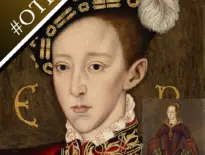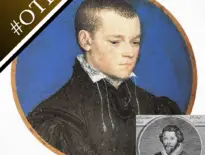On this day in Tudor history, 5th July, an imprisoned Sir Thomas More wrote his final letter; a shoemaker and religious radical was executed in the reign of Elizabeth I; and one of the Essex Witches was hanged at Chelmsford...
- 1535 - Sir Thomas More, who was imprisoned in the Tower of London and awaiting execution, wrote his final letter. It was to his beloved daughter, Margaret Roper, and it was written in coal. More was executed the following day. See the video below.
- 1583 – Execution of John Copping, shoemaker and religious radical, for 'dispersing' books by Robert Browne and Richard Harrison, which were viewed as “sundry seditious, schismatical and erroneous printed books”. See video below.
- 1589 – Executions of Catholic priests and martyrs George Nichols and Richard Yaxley, along with Catholics Thomas Belson and Humphrey Prichard. Nichols and Yaxley were hanged, drawn and quartered, and Belson and Prichard were hanged.
- 1589 – Hanging of Joan Cunny (Cony), one of the 'Essex Witches', at Chelmsford. See video below.
- 1591 – Burial of Humfrey (Humfray) Cole, goldsmith, engraver, mathematical instrument maker and die sinker, at St Gregory by St Paul's, London. Cole was a die sinker at the Tower of London mint. His mathematical instruments included an armillary sphere, astrolabe and instruments needed for Martin Frobisher's 1576 voyage. Twenty-six of his instruments still survive today.
- 1600 – Execution of Jean Livingston (Lady Warriston) at the Girth Cross in Edinburgh. She was beheaded by the 'Maiden', a type of guillotine, for murder. Livingston was unhappily married to John Kincaid of Warriston when her nurse, Janet Murdo, came up with the idea of murdering him to release Livingston from her torment. Livingston asked a servant, Robert Weir, to do the deed, which he did on the night of 1st July 1600. Murdo was burned at the stake on Castle Hill and Weir, who had fled after the murder, was arrested in 1604 and 'broken on the wheel' at Edinburgh.



Leave a Reply